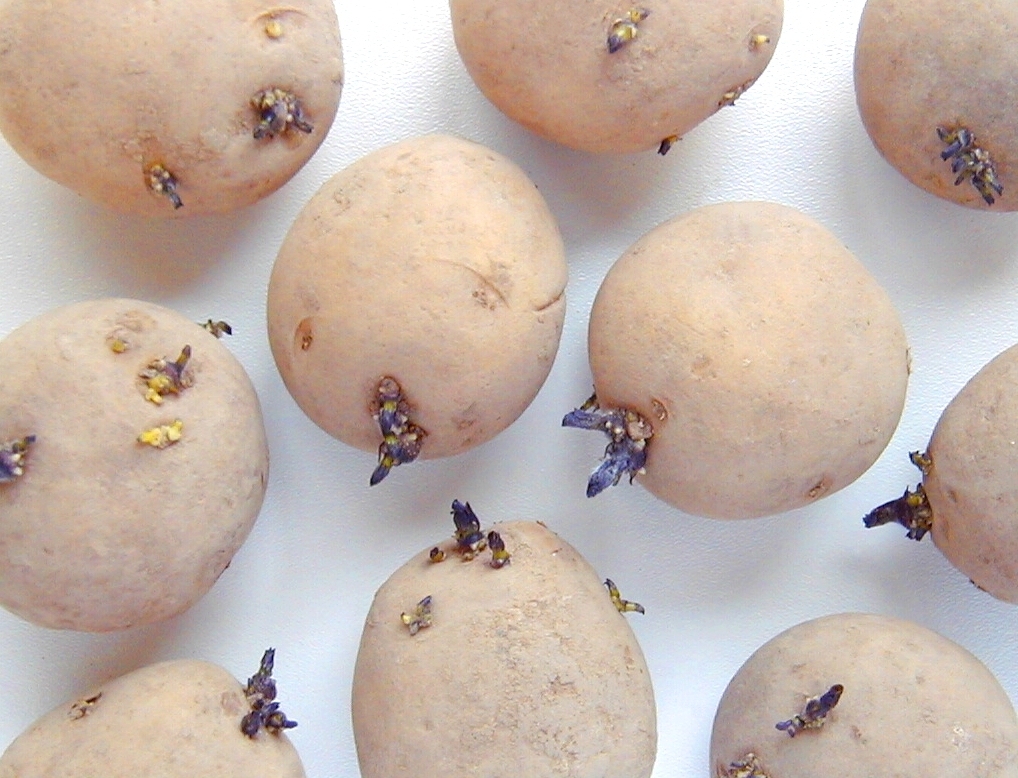Please click here to access the main AHDB website and other sectors.
- Home
- Knowledge library
- Development of seed rate recommendations for potatoes
Development of seed rate recommendations for potatoes
Summary
Research work on the effects of seed age on stem production led to the development of new seed rate recommendations for Estima based on data from a series of experiments conducted over several years (see R296 report below) . These recommendations used a mechanistic approach based on the relationship between the number of stems, seed tuber weight and seed age and subsequent experiments with additional varieties have enabled the same approach to be used to derive recommendations for these varieties. An extensive ongoing experimental programme would be required to provide recommendations for all new varieties in the same way. Therefore, a more accessible system for deriving seed rate recommendations, that can be applied in a consistent way to all new varieties, was needed.
The objective of this project was to develop a simple system for deriving recommendations that would be more effective than the commonly adopted approach of basing recommendations for new varieties on those used for existing varieties.
Approach
Thirteen common varieties were included in all years and one variety (Vales Sovereign) included in 2011 only was dropped from the project so that datasets were assembled for a total of 17 varieties. Complementary data on numbers of stems, numbers of tubers and graded yield from collaborators’ experiments and from commercial crops were collected and collated alongside the data from the field experiments. The combined datasets were analysed to calculate key relationships and parameters which affect seed rate requirements. These included the relationships between the number of tubers and stems, relationships between the number of stems per seed tuber and seed tuber weight, effect of seed age on the number of stems per seed tuber and tuber shape. These parameters were used to derive provisional seed rate recommendations for the varieties included in the study using a system adapted from previous work.
Key Findings
Simple experiments conducted over three seasons can provide sufficiently consistent data to enable calculation of preliminary seed rates for new varieties for standard-aged seed stocks. Determining the effect of seed age on seed rates is not easily achieved using readily available seed stocks and documentation and requires dedicated identification or production of seed of contrasting age combined with a specific experimental approach. Relatively little data suitable for calculating key parameters for deriving seed rates are routinely collected by organisations with interests in introducing new varieties. Whilst the simple system for deriving new seed rates should be more effective than existing approaches of basing recommendations on existing varieties, this new approach cannot be adopted without resources being dedicated to provide the required information.
The most reliable seed recommendations from this project can be expected to be for the varieties Casablanca, Innovator, Jelly, Markies, Perline, Saphire and Sylvana for which fairly comprehensive datasets were collated whilst recommendations for the other varieties studied would benefit most from further development work.
Recommendations
Data on the emergence date of seed crops should be routinely collected and documented so that the effect of seed age can be quantified and, where appropriate, accounted for in recommendations. Given the importance of appropriate seed rates in achieving the target size distribution in crops with contrasting end markets (e.g. salads and bakers), conducting specific experiments to obtain data to calculate key variety-specific parameters affecting seed rates would be worthwhile and should form part of the process of new variety introductions.
The reports from an earlier project (807/214) "The effects of production practices, storage conditions and sprouting on number of stems per seed tuber and the grading of potato crops" are also provided. In the project, the dormancy and re-growth of seed tubers from a range of production cycles was investigated over a wide range of replanting dates from 2001-2004. The experiments examined the effects of seed size, sprouting, planting density, planting date and controlled atmosphere treatment on the number of stems produced and other aspects of crop growth.
Downloads
R446 Final Report (2013) R296 Final Report 2011 R296 R446 Report Analysis Historical Data 2008 807214 Final Report 2005 807214 Interim Report 2001_2003Related resources


